2025.02.07
Tokyo Kaiseki: Best Kaiseki Restaurant for First-Time Visitors in Tokyo
By Chef Yuuki Tanaka, owner of Ise Sueyoshi — Tripadvisor Best of the Best: Japan #1, World #12.(source).
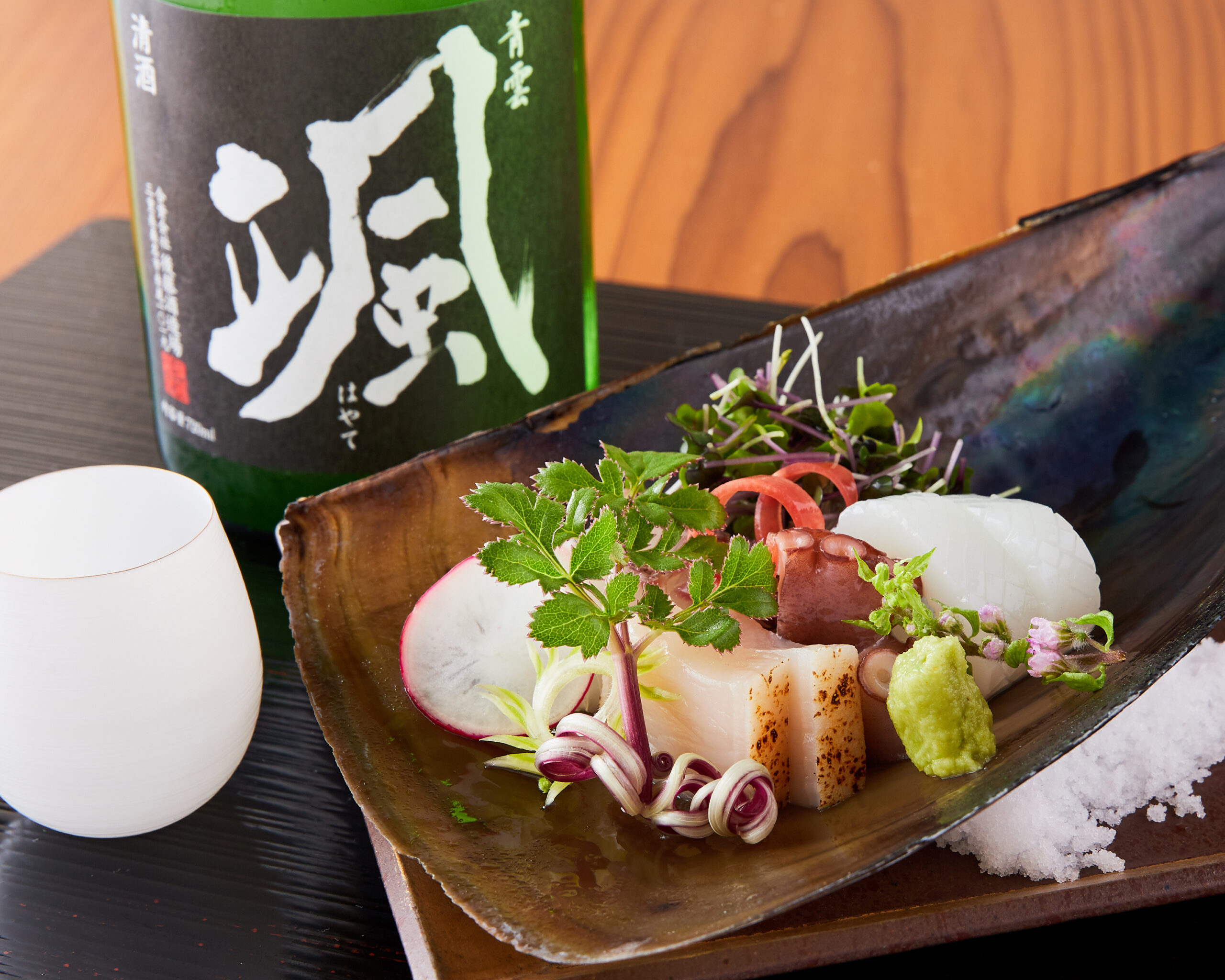
What You’ll Learn in This Article
• Why kaiseki is a must-try culinary experience for first-time visitors to Japan
• What makes Tokyo’s kaiseki scene unique and approachable, even for beginners
• How seasonal ingredients and presentation play a central role in kaiseki
• Why Ise Sueyoshi is an ideal starting point for kaiseki in Tokyo
• Tips for enjoying your first kaiseki meal in Japan, even without prior knowledge
Experience the Essence of Time and Season Through Kaiseki
In the quiet flow of time, each dish embodies the subtle transition of the seasons.
Kaiseki is not just a meal—it is a sensory journey into Japanese culture and aesthetics.
If you are looking to make your stay in Tokyo truly special, Kaiseki is an experience you must not miss.
Every dish reflects the essence of Japan’s seasonal blessings, carefully prepared with refined flavors and exquisite presentation.
The serene atmosphere and heartfelt hospitality create an experience beyond dining—a moment of true elegance and cultural immersion.
In this blog, we will guide you through:
- What is Kaiseki?
- Essential tips for first-time Kaiseki diners
- Healthy Japanese Dining,Kaiseki
- How to choose the best Kaiseki restaurant in Tokyo
For those seeking a memorable and authentic dining experience in Tokyo, this blog is for you.
Let’s explore the world of Kaiseki together.
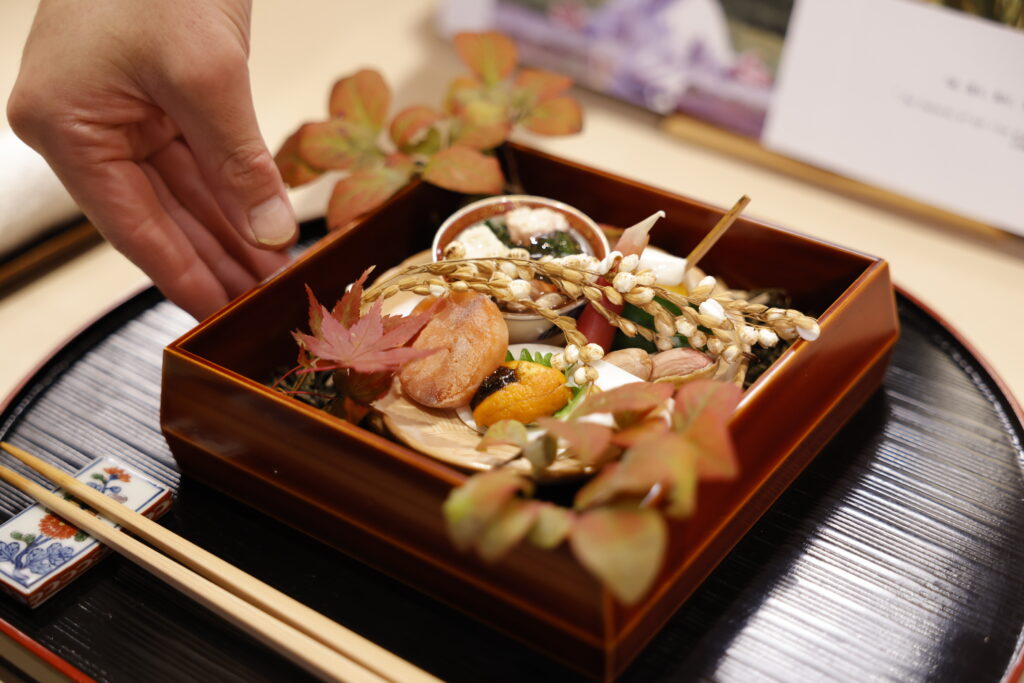
What is Kaiseki?
If You Seek to Experience the True Essence of Japanese Culture, Kaiseki is the Ultimate Culinary Journey
Sushi and ramen are undoubtedly iconic, but Kaiseki offers something entirely different—the opportunity to “taste” Japan’s four seasons and traditions.
More than just a meal, Kaiseki is a cultural and historical experience, where every dish tells a story of Japan’s past, seasonal customs, and refined aesthetics.
Each course is meticulously crafted to highlight the best seasonal ingredients while capturing the essence of Japan’s seasonal festivals and artistic traditions.
For example, in spring, you may find dishes inspired by cherry blossoms, while autumn Kaiseki features flavors and presentations that evoke the beauty of falling leaves.
Rooted in the philosophy of the Japanese tea ceremony, Kaiseki is not just about the food—it embodies the spirit of hospitality, or “omotenashi”.
Experiencing Kaiseki is a gateway to a deeper understanding of Japanese culture and tradition, far beyond a typical dining experience.
If you are searching for a truly special evening, Kaiseki is the perfect choice.
It offers a luxurious yet unpretentious way to enjoy the pinnacle of Japanese cuisine.
When visiting Tokyo, make Kaiseki a part of your journey and savor a truly unforgettable dining experience.
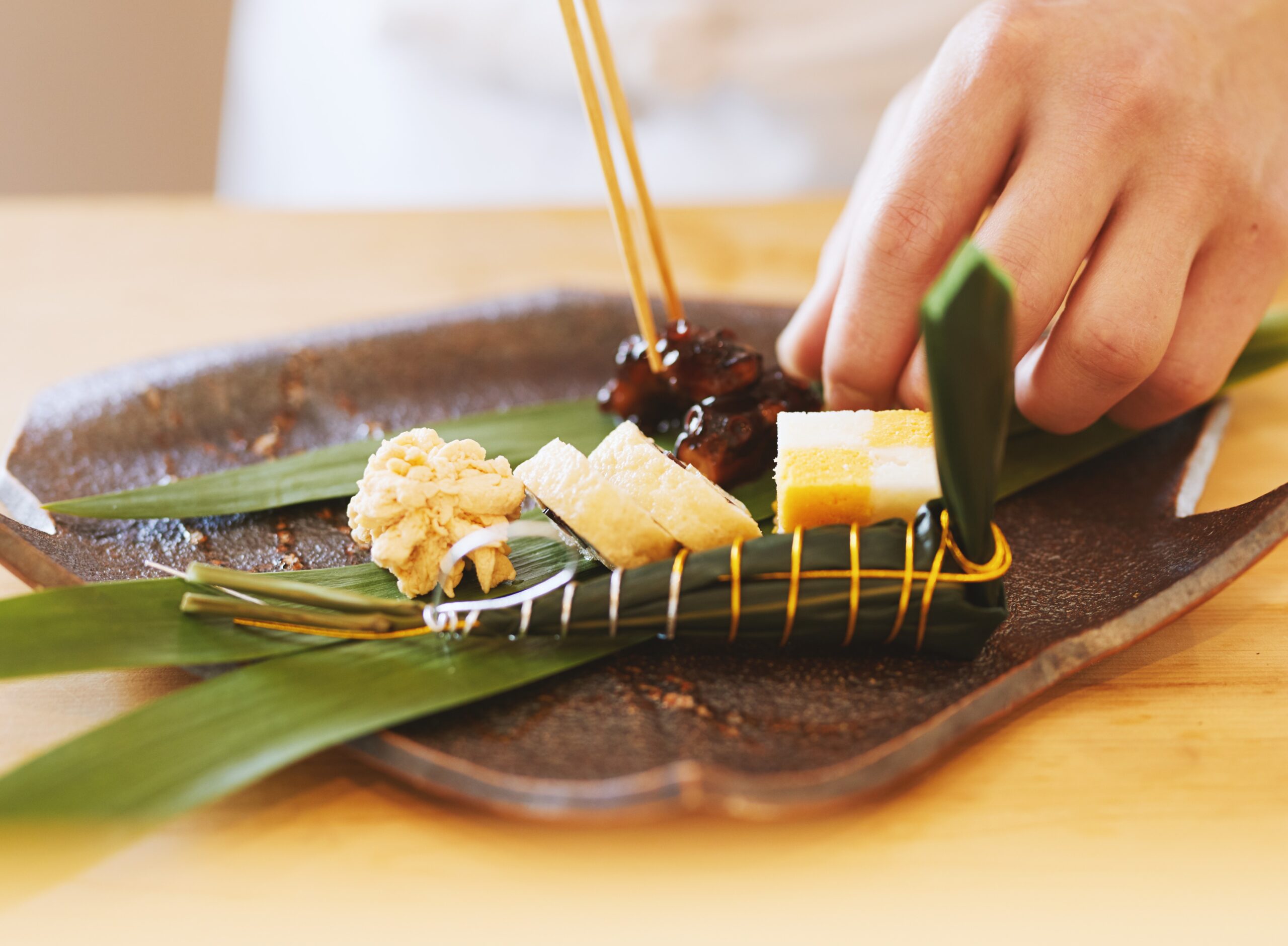
Essential tips for first-time Kaiseki diners
Kaiseki: More Than Just a Meal, a Cultural Experience
Kaiseki (懐石料理) is not simply about enjoying food—it is a journey into Japanese culture.
Each dish embodies the changing seasons, the chef’s craftsmanship and creativity, and Japan’s unique spirit of hospitality, known as “omotenashi.”
One of the most remarkable aspects of Kaiseki is its diversity of ingredients and cooking techniques.
From fresh seafood and mountain delicacies to refined fermented foods, every dish showcases flavors that can only be found in Japan.
Moreover, Kaiseki features distinct Japanese dining customs, offering a deeper appreciation of the country’s culinary heritage.
For many first-time visitors, it will be a chance to discover flavors and textures they have never experienced before.
While the structure of a Kaiseki meal may vary depending on the chef’s approach and the season, it typically follows this sequence:
The Flow of a Traditional Kaiseki Meal
1️⃣ Hassun (Appetizers) – A selection of small seasonal dishes beautifully arranged.
2️⃣ Wanmono (Soup) – A delicate broth highlighting the umami of dashi.
3️⃣ Mukozuke (Sashimi) – Fresh seasonal sashimi, showcasing Japan’s expertise in raw seafood.
4️⃣ Yakimono (Grilled Dish) – A grilled fish or meat dish, emphasizing rich, smoky flavors.
5️⃣ Shiizakana (Main Dish) – The centerpiece of the meal, often featuring a luxurious ingredient.
6️⃣ Shokuji (Rice, Miso Soup, and Pickles) – A fundamental part of Japanese cuisine, providing balance to the meal.
7️⃣ Kanmimono (Dessert) – Seasonal Japanese sweets or fresh fruits, leaving a refined and refreshing aftertaste.
Kaiseki is designed to be a multi-course dining experience where each dish builds upon the last, creating a harmonious progression of flavors and textures.
Every element—from the ingredients to the plating and even the choice of tableware—is carefully considered to enhance both the aesthetics and taste of the meal.
Experiencing Kaiseki is more than just enjoying a luxurious dinner—it is an invitation to savor Japan’s rich culinary traditions and seasonal beauty.
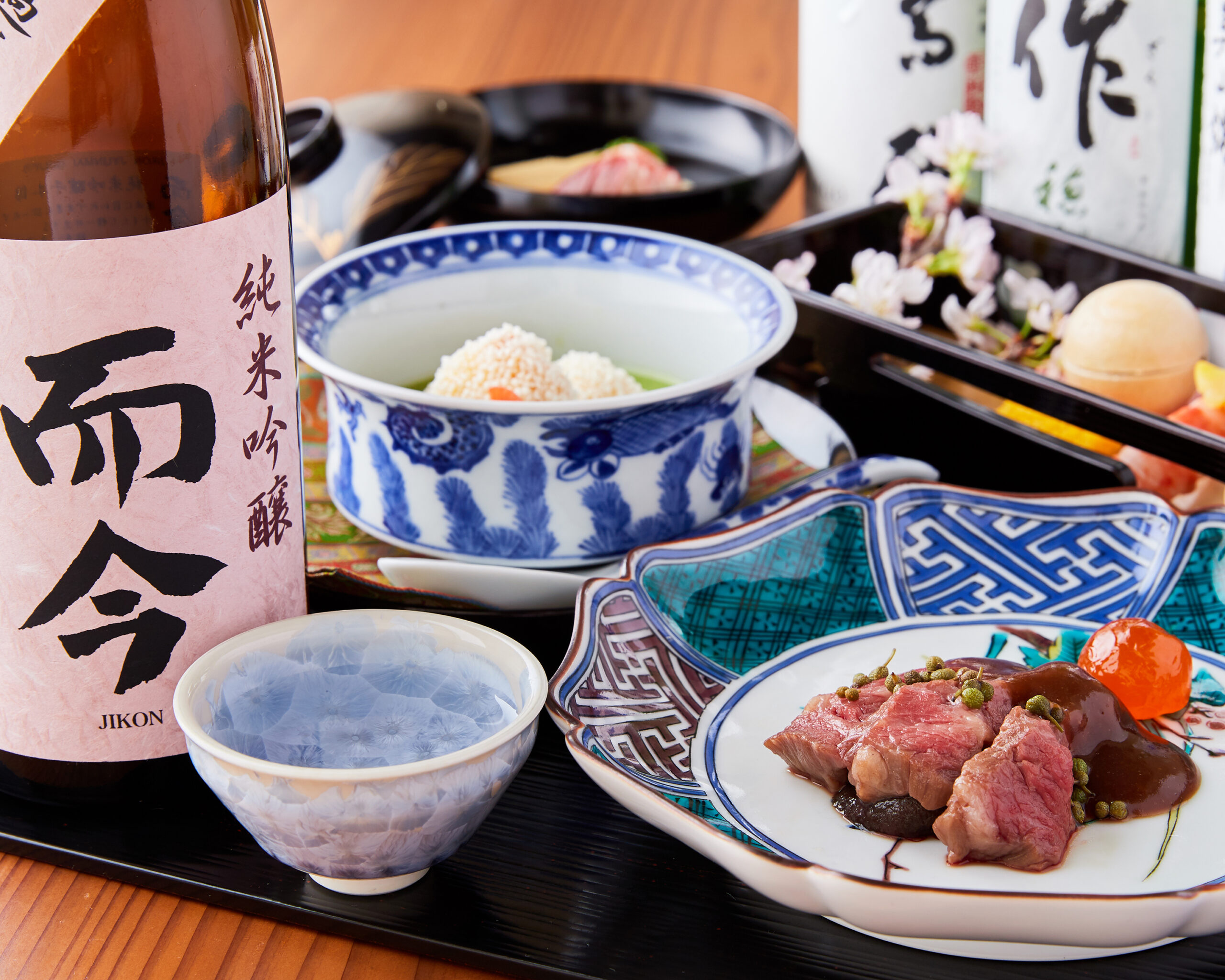
Healthy Japanese Dining
Lower in Calories Than a French Full Course? The Secret of Kaiseki Cuisine
Did you know that Kaiseki cuisine is not only refined and elegantly flavored but also surprisingly healthy?
On average, a full Kaiseki course contains 1.5 to 2.5 times fewer calories than a French full-course meal.
The reason lies in Kaiseki’s philosophy of “subtractive cooking,” where flavors are carefully enhanced rather than overpowered.
Within this minimalistic approach, the art of bringing out umami plays a key role.
✔ Instead of relying on butter or heavy oils, Kaiseki enhances the natural flavors of ingredients.
✔ Rather than using strong spices, it brings out depth through dashi-based umami.
✔ The delicate balance of vegetables, fish, and fermented foods ensures a light yet satisfying experience.
In French and Italian cuisine, richness and depth of flavor are often achieved by incorporating butter, cream, or olive oil.
However, Kaiseki highlights the natural umami from dashi broth and fermented seasonings, allowing the ingredients themselves to shine.
Additionally, Kaiseki follows a multi-course, small-portion dining style, ensuring a well-balanced meal that leaves you feeling satisfied without feeling overly full.
The concept of “delicious yet healthy” is gaining recognition worldwide, particularly among those who prioritize wellness and mindful eating.
If you are looking for a refined Japanese dining experience that is both indulgent and gentle on the body, Kaiseki is the perfect choice during your visit to Tokyo.
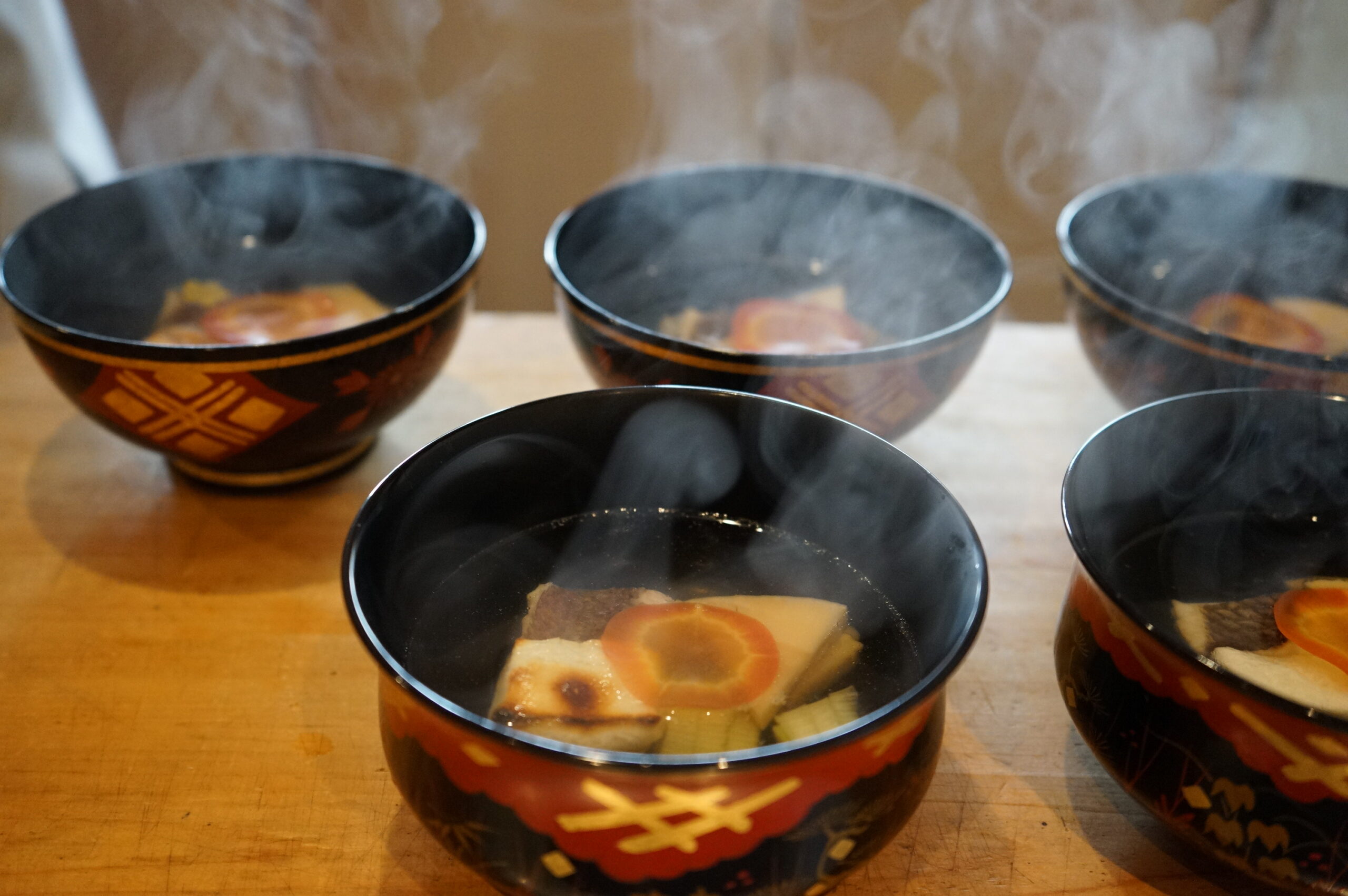
Kaiseki vs Omakase
Which One is Right for You? Kaiseki vs. Omakase
If you are looking for a truly special dining experience in Japan, both Kaiseki and Omakase are excellent choices.
Both styles showcase seasonal ingredients and highlight the artistry of Japanese cuisine, but they offer very different dining experiences.
Kaiseki is a meticulously crafted multi-course meal, where each dish tells a story—from appetizers to dessert, offering a journey through Japan’s culinary traditions.
On the other hand, Omakase is a chef-curated experience, where the chef selects and serves the best sushi of the day, piece by piece, creating a dynamic and immersive dining experience.
What is Omakase? Origins & Experience
The word “Omakase” translates to “Chef’s Choice” in English.
Instead of ordering from a menu, guests trust the chef to serve the finest seasonal selections, often presented one piece at a time.
The order, size, and flavor balance are all carefully decided by the chef, creating a personalized experience.
Interestingly, Kaiseki also follows a chef’s selection, so in a sense, it can also be considered an Omakase-style meal.
However, the term “Omakase” is most commonly associated with sushi courses.
Historically, at Edo-style sushi restaurants, there were two options:
1️⃣ “Omakase” (leave everything to the chef)
2️⃣ “Okonomi” (order specific sushi based on personal preference)
A typical conversation might go like this:
“Welcome!”
“I’ll go with Omakase today.”
“Thank you! We have an exceptional tuna today. Let’s start with that.”
This Omakase culture has since expanded beyond sushi, becoming a well-established high-end Japanese dining style.
Which One Should You Choose? Kaiseki vs. Omakase
✔ If you want to experience Japan’s culinary artistry in its entirety, Kaiseki is the best choice.
It offers a deep cultural experience, highlighting seasonal ingredients, intricate preparation, and elegant presentation.
✔ If you want to indulge in the finest sushi, Omakase is ideal.
It focuses solely on top-quality fish such as premium tuna and uni, providing the ultimate sushi experience.
Kaiseki also offers sushi, but it goes beyond that, featuring:
🍶 Charcoal-grilled wagyu,
🍵 Rich, umami-packed soups,
🍷 Perfect sake pairings,
✨ A refined balance of flavors across multiple courses.
If you are looking for a truly memorable dining experience in Tokyo, Kaiseki is an exceptional choice.
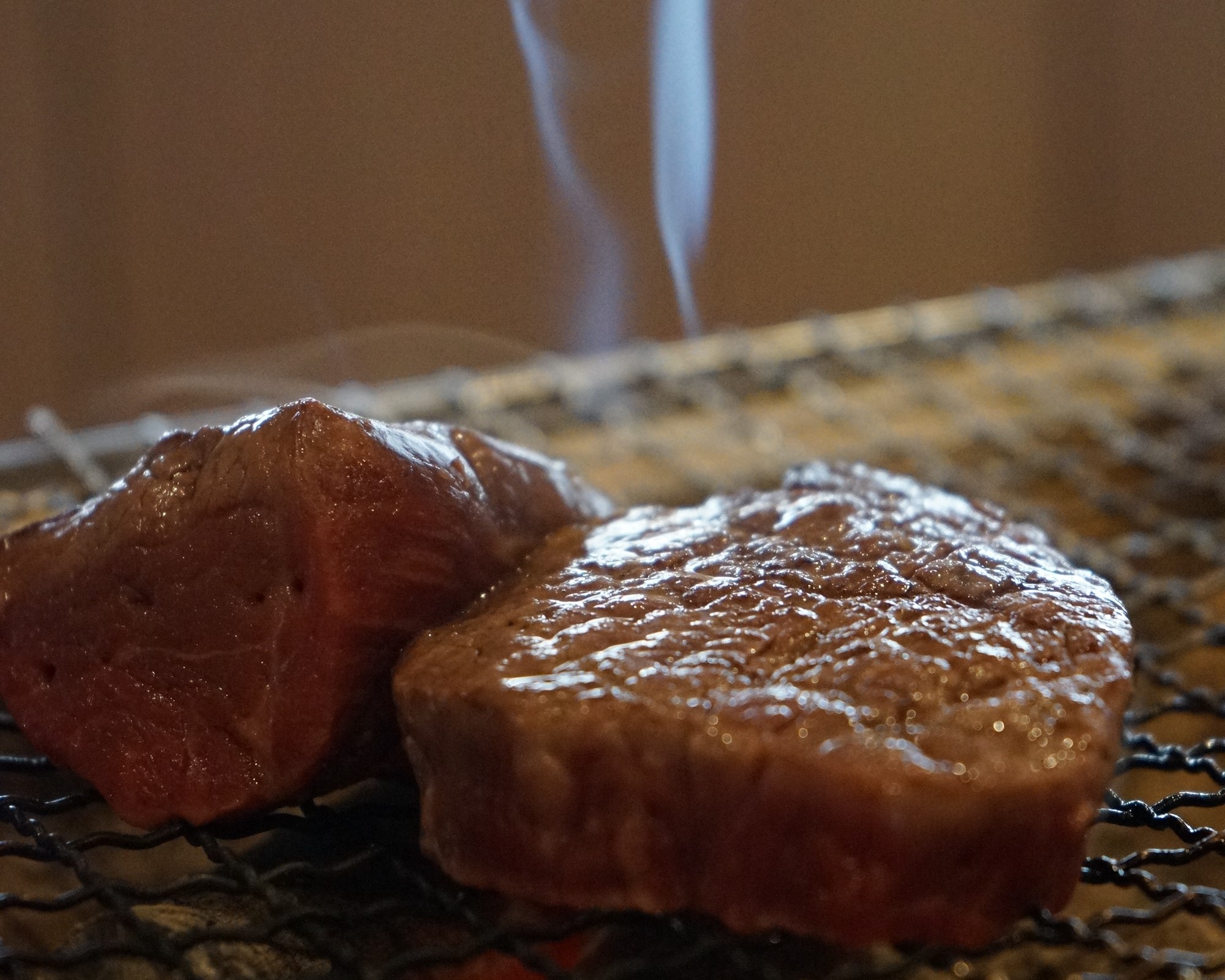
Why Try Kaiseki?
Tokyo is home to some of the world’s best Kaiseki restaurants, offering an unparalleled fine dining experience.
But you might be wondering, “Why should I try Kaiseki when visiting Japan?”
The answer is simple—Kaiseki is the pinnacle of Japanese culinary culture, combining seasonal ingredients, artistic presentation, and deep-rooted traditions.
1️⃣ Experience Seasonal Ingredients at Their Peak
One of the defining features of Kaiseki is its celebration of seasonality.
Japan has four distinct seasons, each offering unique ingredients that are at their absolute best.
🍂 Spring – Cherry blossom sea bream (sakura-dai)
🌿 Summer – Freshwater sweetfish (ayu)
🍁 Autumn – Fragrant matsutake mushrooms
❄️ Winter – Delicate fugu pufferfish and snow crab
However, Kaiseki is more than just using seasonal ingredients—it’s about elevating their natural flavors through precise culinary techniques.
Even something as simple as making dashi (Japanese broth) involves expert craftsmanship, balancing the thickness of kombu seaweed and the variety of dried bonito flakes to create the perfect umami flavor.
This “invisible work” is what transforms Kaiseki into an extraordinary dining experience, making every dish a reflection of Japan’s seasonal beauty.
2️⃣ A Dining Experience That Embodies Japan’s Four Seasons
Kaiseki is not just about flavors—it is a multi-sensory experience where you can see, feel, and taste the changing seasons.
This is reflected in the presentation, the plating, and even the tableware used in each course.
🌸 Spring – Delicate plates inspired by cherry blossoms
🌊 Summer – Cool, transparent glass dishes
🍁 Autumn – Earthy ceramic plates decorated with maple leaves
🔥 Winter – Warm, elegant lacquerware
Beyond the food itself, Kaiseki embraces the Japanese aesthetic of finding beauty in subtle details.
For example, the spacing of food on the plate, the direction of a single leaf, or the balance between color and texture all carry meaning.
Kaiseki is a culinary art form, designed to be enjoyed visually, tasted delicately, and felt emotionally.
3️⃣ Taste Japan’s Most Luxurious Ingredients
A Kaiseki meal often includes some of Japan’s most prized ingredients, offering a chance to indulge in rare and exquisite delicacies.
✔ Wagyu Beef – Renowned worldwide, the A5-grade Wagyu melts in your mouth.
✔ Ise Lobster – Japan’s luxury lobster, famous for its sweet and firm texture.
✔ Maguro (Tuna) – Sourced from chef’s hometown Ise-city, featuring the highest quality cuts.
✔ Fugu (Pufferfish) – A uniquely Japanese delicacy, known for its refined taste and delicate texture.
These premium ingredients are not easily found outside of Japan, making a Kaiseki meal a once-in-a-lifetime gourmet experience.
If you want to enjoy the very best of Japanese cuisine, Kaiseki is an unmissable part of your Tokyo itinerary.
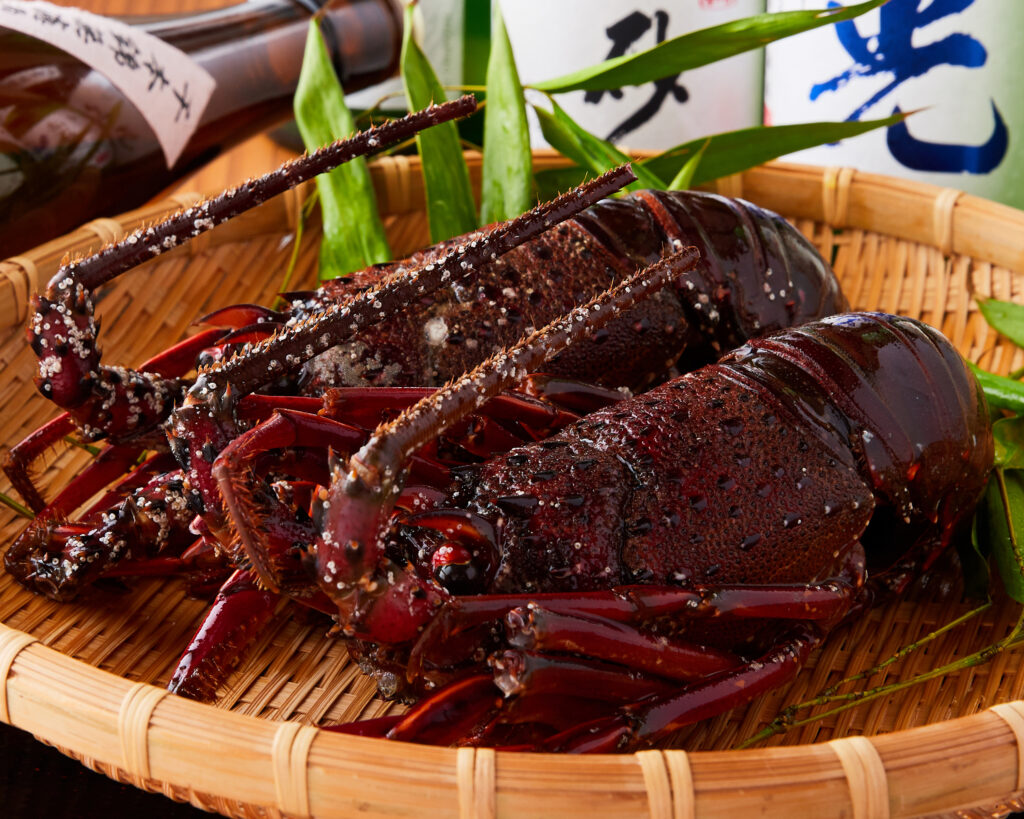
Best Kaiseki Tokyo
How to Choose the Best Kaiseki Restaurant in Tokyo
Tokyo offers countless Kaiseki restaurants, making it difficult for first-time visitors to decide where to go.
To help you choose the perfect Kaiseki dining experience, here are some key points to consider:
- Choose a restaurant with English-friendly service
One of the most important aspects of Kaiseki is the story behind each dish.
Understanding the ingredients, the cultural significance, and the chef’s philosophy enhances the experience.
Selecting a restaurant where the chef or staff can explain the meal in English will allow you to appreciate Kaiseki on a deeper level. - Check reviews and ratings
Before making a reservation, check reviews on Google, Tripadvisor, and the Michelin Guide.
Searching for keywords like “Best Kaiseki Tokyo” or “Fine Dining Tokyo” can help you discover highly-rated Kaiseki restaurants. - Choose a reservation-only restaurant for a relaxed experience
Kaiseki is a slow and immersive dining experience.
Many high-end Kaiseki restaurants are reservation-only, ensuring a peaceful environment where you can fully enjoy each course without feeling rushed. - Check for dietary accommodations (Vegetarian, Vegan, Gluten-Free)
If you or your dining companion have dietary restrictions, it’s best to select a restaurant that caters to special requests.
For example, Ise Sueyoshi is one of the few Kaiseki restaurants in Tokyo that offers customized menus for vegetarians, vegans, and guests with gluten-free needs.
By keeping these points in mind, you can choose the ideal Kaiseki experience for your visit to Tokyo!
Kaiseki at Ise Sueyoshi
Ise Sueyoshi: A Premier Kaiseki Restaurant in Tokyo
Ise Sueyoshi is a reservation-only Kaiseki restaurant located in Hiroo, Tokyo.
Highly praised by international guests, it is especially recommended for those who wish to experience Japanese culture on a deeper level.
🌟 Why Choose Ise Sueyoshi?
✅ Chef Yuuki Tanaka personally explains each dish in English – Learn about the ingredients, cooking techniques, and cultural background while enjoying your meal.
✅ Premium Japanese ingredients – Indulge in the finest selections such as Wagyu beef, Ise lobster, and premium tuna, all carefully sourced for an authentic taste of Japan.
✅ An intimate, private dining experience – With a limited number of seats, Ise Sueyoshi ensures a personalized and attentive dining atmosphere.
✅ Accommodates dietary restrictions – Whether you are vegetarian, vegan, or gluten-free, the restaurant offers tailored menus so that every guest can fully enjoy their Kaiseki experience.
For more about our vegan and gluten-free philosophy, please visit this page.
For more about our Fugu delicacy and its unique culinary experience, please visit this page:
Poison Fish: Exploring Fugu, Japan’s Most Expensive Delicacy
Best Kaiseki experience of all time – Artistry at Work
2024年12月 • friends
This may be the best dining experience of all time – don’t miss it. Even compared to top NYC haute cuisine, this was another level. First let me start with the Sake pairing – we had 9-10 different Sakes, all of which are local or impossible to find, each one paired exactly with the flavors and nuances of each course. The chef spent 15 years traveling and preparing to produce amazing delicacies, many of which are from his hometown and we even had a small book detailing every producer of every product. They were fantastic about accommodating some of our food preferences (for example, I didn’t do the pufferfish which they are licensed to serve but my friends loved it) and every dish was more amazing than the last. It was truly the most authentic and transcendent meal of all time in every way. We can’t thank ALL the staff enough for the time and care they put into this experience. More than “just” a dining experience, it was a near religious experience in artistry. My only worry is that we will never surpass this experience but it is worth it.
Kaiseki Dining Tips
How to Enjoy Kaiseki at Its Best
To make the most of your Kaiseki dining experience, keep these essential tips in mind:
- Make a reservation at least one month in advance – Popular Kaiseki restaurants fill up quickly.
- Dress appropriately – Smart casual attire is recommended to match the refined atmosphere.
Experiencing Kaiseki in Tokyo is a perfect opportunity to explore the depth of Japanese culinary culture.
Take this chance to create an unforgettable dining experience at Ise Sueyoshi.
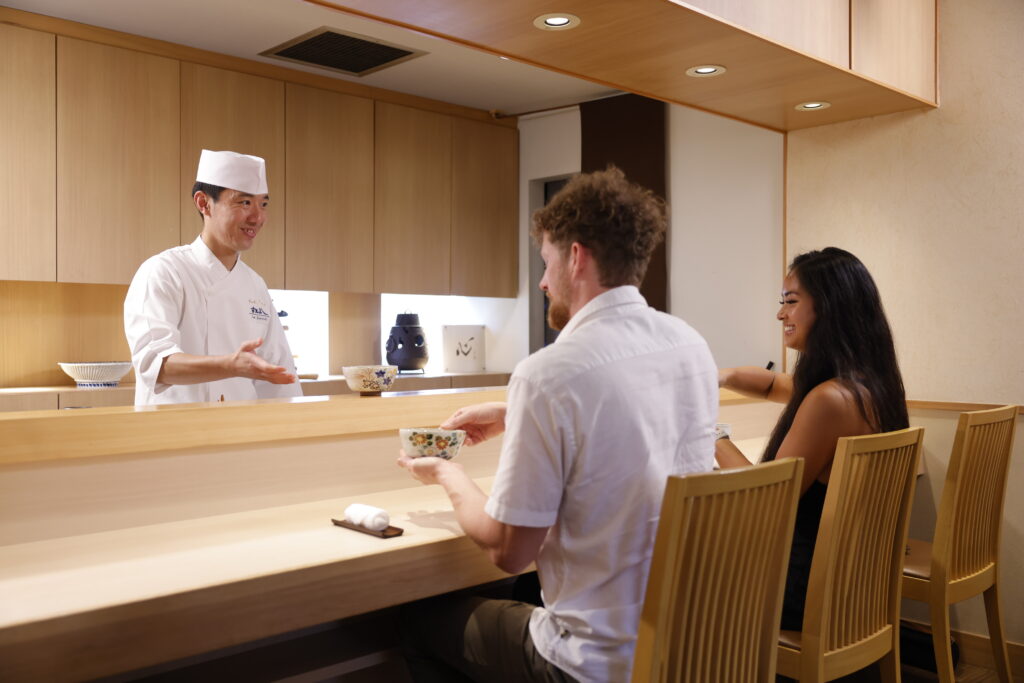
We are proud to continue delivering an exceptional dining experience that earned us the Tripadvisor Travelers’ Choice Best of the Best 2024 award, ranking among the Best Restaurants in Tokyo.
Discover more about our journey to becoming one of the best restaurants in the city [here].

Visit Ise Sueyoshi
Location: Conveniently located 12 minutes from Roppongi Station and 8 minutes from Hiroo Station.
Hours: Open 5:00 PM – 10:00 PM, reservations only. Closed on Sundays and Mondays.
🌸We will be open Monday to Saturday from March through April!
Book Your Experience ☟
Conclusion
At Ise Sueyoshi, we humbly invite you to experience a dining journey that caters to all dietary needs. Whether you’re vegan, halal, or have specific preferences, we are here to create a memorable and inclusive dining experience for you, especially for special occasions like a honeymoon.
Looking ahead to 2025, we promise to continue striving as the “Best Kaiseki Restaurant,” delivering unique culinary experiences that reflect the beauty and depth of Japanese culture. Reservations are now open through the end of 2025. We encourage you to plan early and join us for a special dining experience. May our dishes and hospitality create cherished memories for your journey.
Recommended Blog Posts
On our blog, we offer further insights into Tokyo’s rich food culture and the unique culinary experiences we provide at Ise Sueyoshi. Be sure to check out these recommended posts:
Vegan and Gluten free Options in Tokyo: Inclusive Dining at Ise Sueyoshi
@isesueyoshi
o 🏆 Awarded the prestigious Best Luxury Restaurant by TripAdvisor
o 🌍 Ranked 2nd worldwide, 1st in Japan, and 1st in Asia
o ⭐ Google rating of 4.9 (as of 2024)
o ✅ Vegan-friendly
o ✅ Halal selections
o ✅ Gluten-free options
o ✅ Vegetarian delights
o ✅ Pork-free choices
o ✅ Perfect for pescatarians
o 🌈 Welcoming and inclusive environment for LGBTQ guests
o 🚃 Just a 12-minute walk from Roppongi Station or 8-minutes from Hiroo Station
o ⏰ 5:00 PM – 10:00 PM (reservations-only)
o 📅 Closed on Sun and Mon

